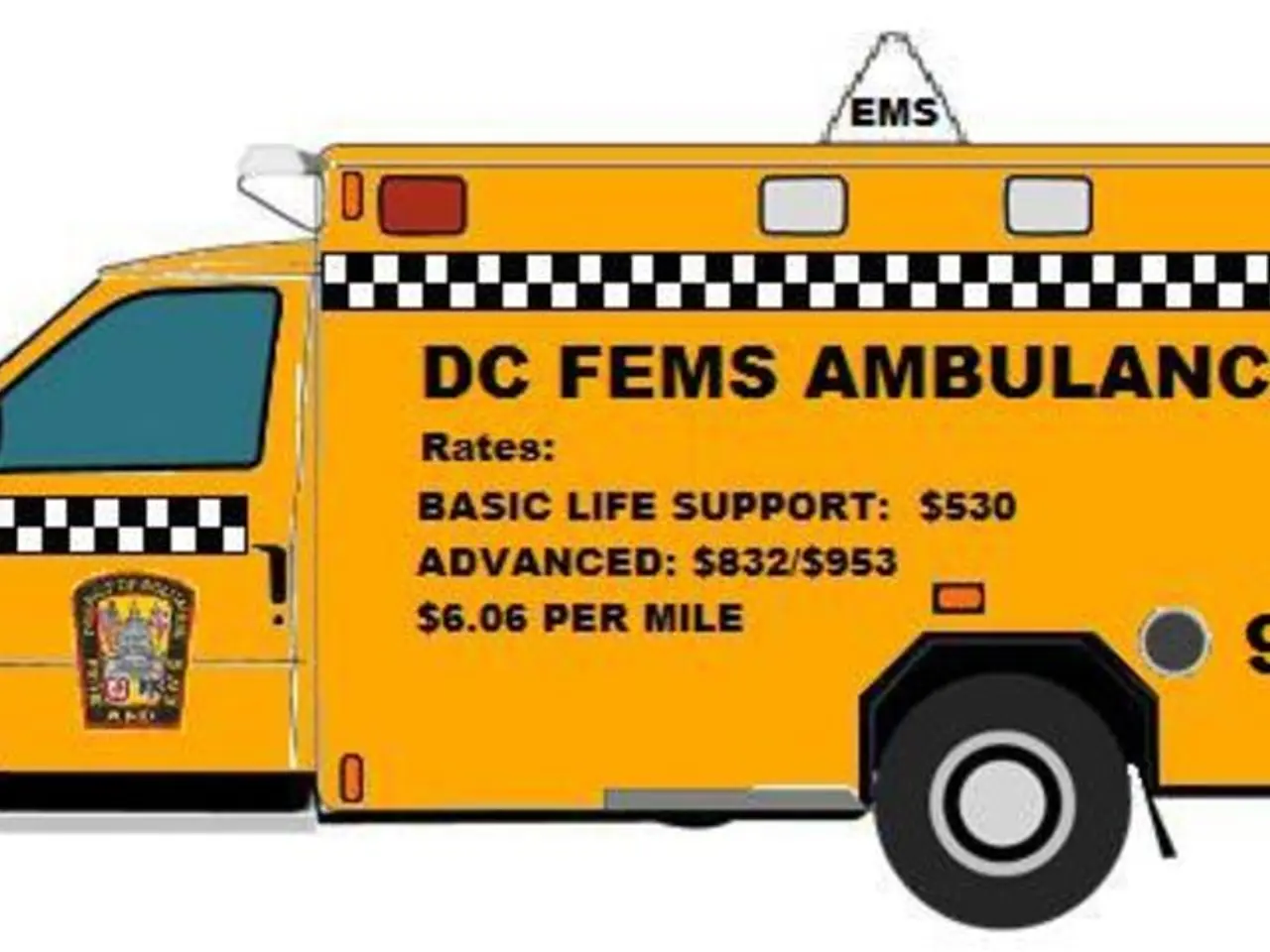Blisters resulting from friction: Root causes, signs, and remedies
Friction blisters are a common nuisance that can occur on the feet and hands, particularly on the heels, toes, sides of the feet, and fingers. These blisters are formed due to the separation of the outermost layer of skin from the layers beneath, caused by continuous rubbing over a long period or intense rubbing over a shorter period.
If you find yourself dealing with friction blisters, there are several home remedies and preventive measures you can take.
Prevention Measures
- Wear well-fitting, worn-in shoes. Properly fitting shoes are crucial in preventing friction blisters. Make sure your shoes are comfortable and not too tight or loose.
- Keep your feet dry. Moisture contributes heavily to blister formation, so it's essential to keep your feet dry. Carry extra socks and wear lightweight, breathable footwear to prevent sweat buildup.
- Change your socks frequently. Changing your socks regularly helps keep your feet dry and reduces the risk of blisters.
- Apply protective barriers. Tincture of benzoin or moleskin can be used on areas prone to blisters to create a protective layer.
- Use insoles and orthotics. These can help reduce pressure points on the feet and prevent friction blisters.
- Wear protective gloves. If you're engaging in activities that require repetitive use of your hands, wearing protective gloves can help prevent friction blisters on your fingers.
Home Remedies
- Duct tape or moleskin. Wrapping a blister with several layers of duct tape or applying moleskin can reduce friction and protect the blister.
- Antiseptic creams or Vaseline. Applying antiseptic creams or Vaseline on unopened blisters can help reduce irritation and the risk of infection.
- Tincture of benzoin. This substance both disinfects and forms a protective layer on the skin, helping moleskin adhere even when wet.
- Aloe vera. Aloe vera can improve wound healing and reduce the risk of infection. Apply it to the affected area two or three times a day until the skin heals.
- Tea tree oil and eucalyptus oil. Both oils have antibacterial, anti-inflammatory, and pain-relieving properties and can be used as natural treatments for infection.
For persistent or unusual blisters, it's always best to seek medical advice. The American Academy of Dermatology Association (AAD) recommends protecting and covering the blister with a padded bandage, dressing, or soft Band-Aid, using hydrocolloid blister plasters to help the blister heal faster, and avoiding the activity or clothing that caused the blister.
Remember, popping a friction blister at home can open the wound to infection and slow the healing process. If you need to drain a blister, wash your hands, sterilize a needle, insert it carefully into the edge of the blister, allow fluid to drain out, wash the area thoroughly, avoid removing the skin, apply petroleum jelly, and cover the blister with a padded dressing or Band-Aid.
With these tips, you can effectively manage friction blisters and prevent them from occurring in the first place. Stay active, stay safe, and keep your skin protected!
[1] Mayo Clinic. (2021, February 23). Friction blisters. https://www.mayoclinic.org/first-aid/first-aid-friction-blisters/basics/art-20056536
[2] American Academy of Dermatology Association. (n.d.). Blisters. https://www.aad.org/public/diseases/skin-conditions/blisters
[3] National Eczema Association. (n.d.). Dyshidrotic eczema. https://nationaleczema.org/eczema/types-of-eczema/dyshidrotic-eczema/
[4] American Family Physician. (2019, February 1). Hyperhidrosis: Diagnosis and Management. https://www.aafp.org/pubs/afp/issues/2019/0201afp0105.html
- Friction blisters, similar to those on feet and hands, can also occur on the skin, which is a common health-and-wellness issue related to medical-conditions like psoriasis and dyshidrotic eczema.
- Just as wearing correctly fitted footwear prevents friction blisters, proper clothing can aid in the prevention of issues like asthma and migraine triggers.
- Scientific research suggests that certain Predictive, Analytics, and Artificial Intelligence (PAAI) models could aid in early detection of disease, aiding in the prevention of further complications like ulcerative colitis, hepatitis, and even HIV.
- Regular skin-care routines that include sunscreen and moisturizers can help prevent various skin diseases, such as basal cell carcinoma and skin cancer.
- When choosing sportswear for fitness activities, opt for lightweight, breathable clothes that help reduce sweat buildup, thus preventing friction blisters and rashes.
- Seeking medical advice for persistent or unusual blisters protects individuals from mistakenly identifying them as ordinary friction blisters, preventing potential misdiagnosis of conditions like Crohn's disease or a migraine.
- In addition to prevention measures, it's essential to be prepared for emergencies by having a well-stocked medical-kit, including supplies like gauze, medical adhesive tape, and prep solutions, to treat minor wounds effectively.
- AQ (Asthma Quick-Relief) medications are vital in managing asthma attacks and can be prescribed by a healthcare professional for individuals with diagnosed asthma.
- The use of duct tape or moleskin not only protects blisters from further friction but also serves as a useful tool in treating Alopecia Areata, an autoimmune disease that causes hair loss, when applied to the affected areas.




